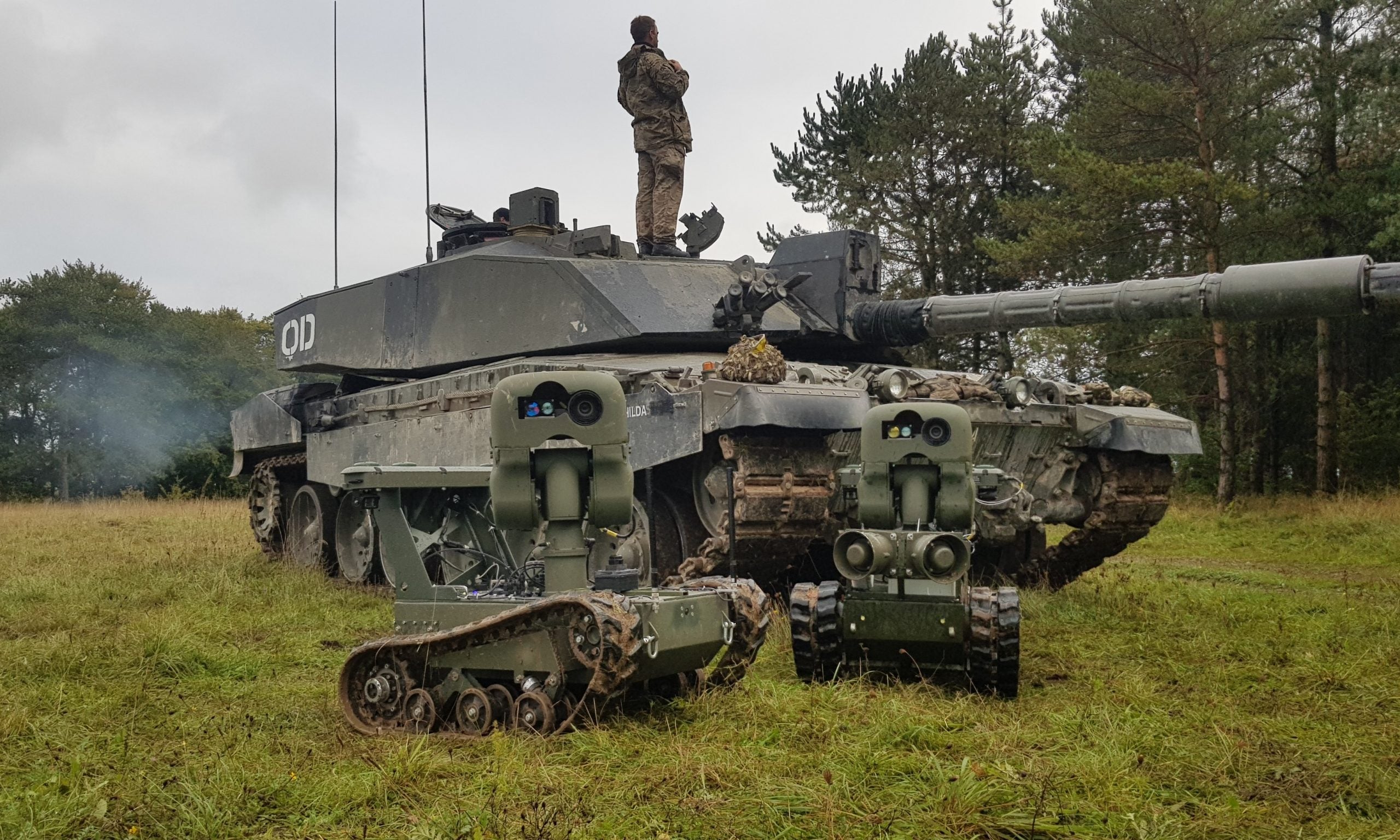
At the British Army’s Army Warfighting Experiment (AWE) 20, British robotics and uncrewed ground vehicle (UGV) developer Digital Concepts Engineering (DCE) impressed army officials with its UGVs equipped with loudspeakers that can be used to confuse the enemy.
The company demonstrated how its X2 and X3 UGVs fitted with a tactical public address system could be used by the army to give the illusion of more or bigger vehicles, or disrupt verbal communications in a close-quarters combat scenario.
During the experiment, the company’s X2 and X3 – an upgraded X2 designed to be faster and quieter to meet British Army needs – were fitted with the same Vitavox Outacom Tactical Public Address system fitted to all variants of the army’s new AJAX armoured vehicle. DCE’s partnership with Vitavox began last year, at the launch of AWE 20’s first phase.
Digital Concepts Engineering also demonstrated how UGVs could be used to support a commander’s situational awareness, giving them a better idea of what is outside the doors of an armoured vehicle, improving safety for dismounted personnel.
DCE director Lionel Nierop explained to Army Technology: “We pitched the concept of a UGV enabled with the tactical public address system for several things. One of those was around the fact that you could send the vehicle forwards and communicate with people on the ground, rather than needing to do that with dismounts. So, you can partly bridge the gap between the mounted soldier and the dismounted soldier.
“It could be used very successfully in the info ops and influence ops role inherent with peace support, peace enforcement, public order and COIN [counter-insurgency] type operations.
How well do you really know your competitors?
Access the most comprehensive Company Profiles on the market, powered by GlobalData. Save hours of research. Gain competitive edge.

Thank you!
Your download email will arrive shortly
Not ready to buy yet? Download a free sample
We are confident about the unique quality of our Company Profiles. However, we want you to make the most beneficial decision for your business, so we offer a free sample that you can download by submitting the below form
By GlobalData“At the moment, as soon as dismounts come out of the back of a Warrior, they’ve only got their personal role radio (PRR), it is very difficult for commanders to tell them what’s going on the ground.”
Filling in this gap, DCE sees the UGV as a means to bridge between the commander, dismounts and mounted personnel, with the vehicle allowing a commander to see what troops are seeing, as well as allowing them to communicate with the troops through the robotic vehicle.
Nierop added: “If I’m looking through the UGV’s cameras, or the UGV operator is remotely looking through its cameras and spots a sniper at a window, that threat can be relayed to all.”
@DgtlConcepts_UK having far too much fun at work today on Salisbury Plain with @RoyalTankRegt , Chess Dynamics ISR and Vitavox Outacom #unmanned #innovation #UGV #BritishArmy pic.twitter.com/417MIvAbyd
— MaryAnn Griffiths (@DefenceAeroPR) September 23, 2020
The utility of the loudspeaker can also be used in an offensive capability, disrupting adversaries verbal communications by simply blaring noise in closed environments such as Operations in Built-Up Areas (OBUA), or being used to coerce potential threats into surrendering.
Suppose a house or structure is filled with adversary personnel, instead of storming the building and potentially putting dismounts in harm’s way. In that case, a UGV could be driven in and used to blast them with noise until they surrender, or to cause confusion. Similarly, a vehicle could be sent into a building ahead of dismounts to draw the attention of potential threats.
Nierop said: “The system is very, very loud and demonstrated that it is impossible to talk over 130 decibels of blaring rock music coming out of a UGV.
“You can imagine that in an urban warfare environment, where you’ve potentially got people trying to communicate verbally if you’ve got a small UGV which is in there yelling its head off, that’s going to make it very difficult for anyone that is fighting against you to communicate.”
The company is also looked at how modern uncrewed vehicle technology could be used to enhance the British Army’s decoy and deception capability. Harking back to the successful use of inflatable tanks to create a dummy invasion force ahead of D-Day, Digital Concept’s Engineering is exploring how their UGVs could be used to simulate gunfire, vehicles or environmental noise to confuse an adversary.
Nierop explained: “So your UGV can simulate several things. It can play a recording of gunfire which is quite effective. It can also play recordings of tank noises and tank movements.”
The British Army recently demonstrated the loudspeaker system during ‘Project Thundercat’ trials on Operation CABRIT – the army’s operational deployment in Eastern Europe. During the Thundercat innovation trials, British Light Cavalry forces mounted on Jackal used the system to trick opposing red forces into thinking that heavily armoured vehicles were approaching.
Red forces subsequently reported a bearing and distance of suspected heavy armour movements and redeployed to counter the threat.
Nierop added: “You can imagine that if you’ve not got mass on the battlefield that’s quite an effective way of giving the appearance of mass at least.”
In an urban environment, this capability could be used to make something as small as a UGV sound like it is a tank moving into position, potentially causing potential threats to redeploy.







